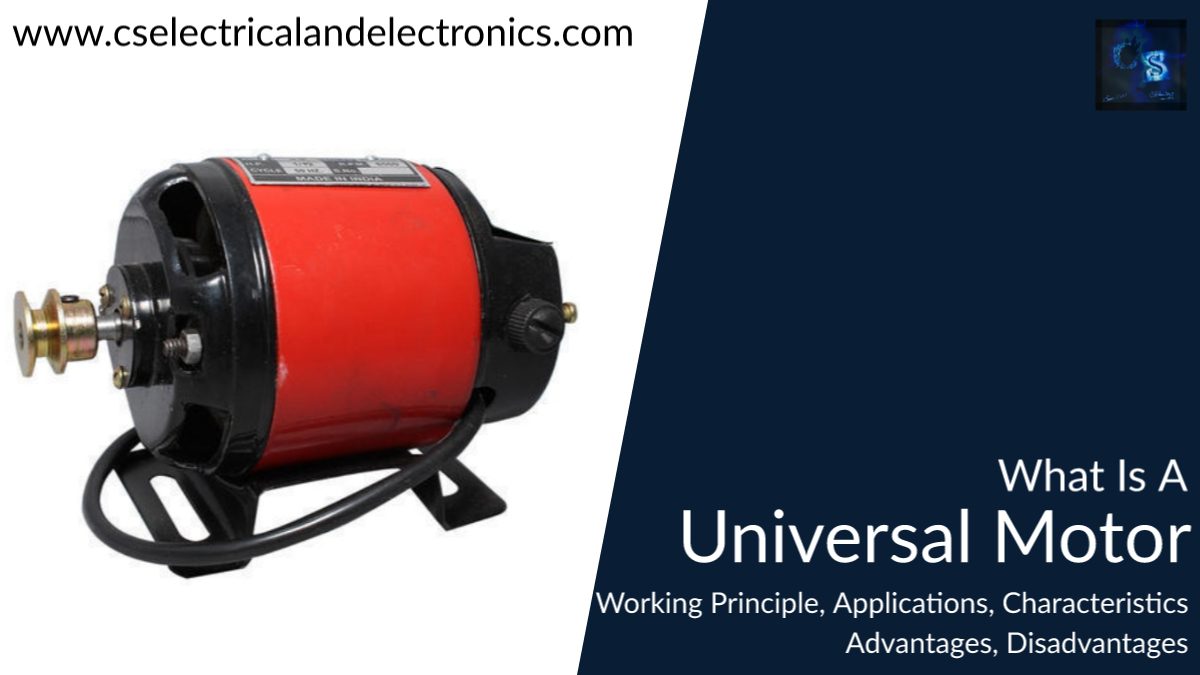What Is A Universal Motor, Working Principle, Characteristics, Applications, DIsadvantages
Hello guys, welcome back to my blog. In this article, I will discuss what is a universal motor, the working principle of the motor, its characteristics of the motor, its applications of the motor, its disadvantages of the universal motor, etc.
If you have any doubts related to electrical, electronics, and computer science, then ask questions. You can also catch me on Instagram – CS Electrical & Electronics And Chetan Shidling.
Also, read:
- Difference between two-wheel and four-wheel electric vehicle Specification
- Top 100+ MATLAB Simulink Projects With SLX File For Engineers
- 1st Oder RC Circuit And 2nd Order RC Equivalent Circuit SoC Estimation
What Is A Universal Motor
Introduction
“Universal motor can be operated on both DC & single-phase AC supply. This can be also called a “single-phase series motor”. These motors will be having high starting torque. This is the main feature of universal motors. Construction is similar to the AC series motor.
It consists of two types,
1. Non-compensated type, low horsepower (HP).
2. Compensated type, high horsepower (HP).
Non-Compensated Type Motor
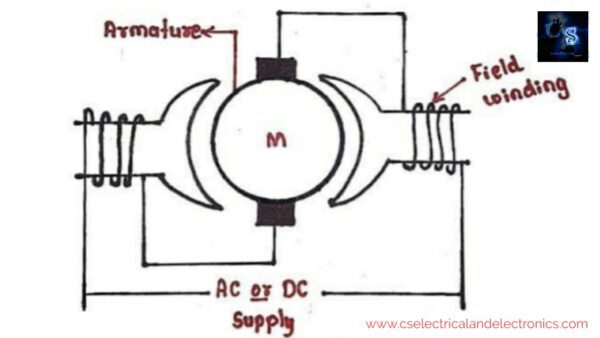
- It mainly consists of 2 poles and, has an entire magnetic path as laminated.
- It’s having wound type armature winding similar to a Normal DC motor.
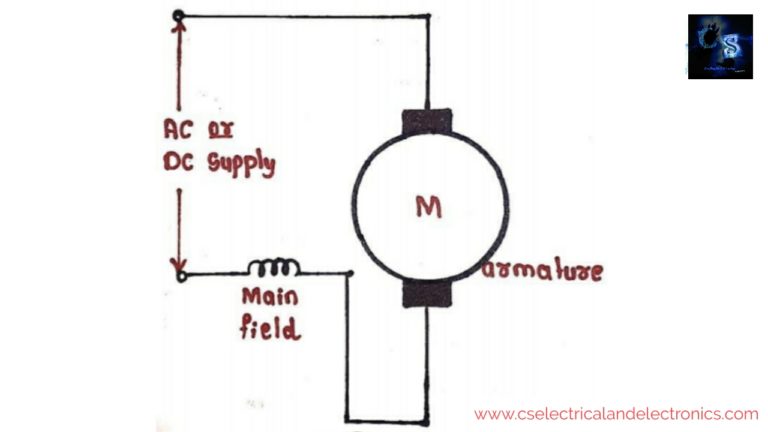
Compensated Type Motor
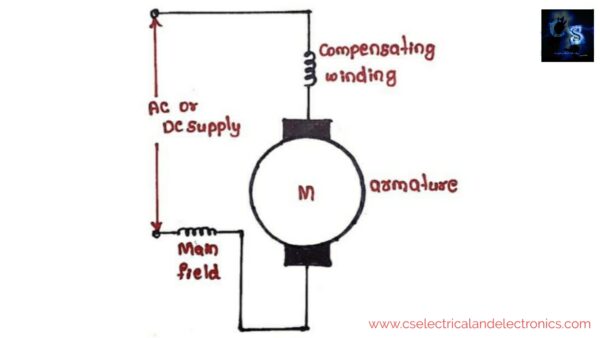
- In this type, the field winding is divided into the main field, & compensating winding.
- This is as same as the split-phase single-phase induction motor.
- This also has a wound-type armature similar to the normal DC motor.
Working Principle Of Universal Motor
As the definition says, the universal motor works on both DC & single-phase AC supplies.
If we give a DC supply to the universal motor, it works as a DC series motor. i.e. if current flows through the field winding, then it will produce an electromagnetic field and the same current will flows through armature conductors. When we placed a current-carrying conductor in an electromagnetic field, it will experience a mechanical force. Due to this force, the rotor will rotate. The direction of the mechanical force will be explained by using “ Fleming’s left-hand rule”.
If we give AC supply, then it produces unidirectional torque. It’s because both the winding of the motor are connected in series, which means they are in the same phase. But polarity of AC supply changes periodically, due to this action the direction of the current in both winding, reverses at the same time. Then the direction of the magnetic field & armature current reverses in such a way that the direction of the force experienced by armature conductors remains the same.
Thus matter of AC or DC supply the Universal motor works similar to the DC series motor.
Speed Torque Characteristics
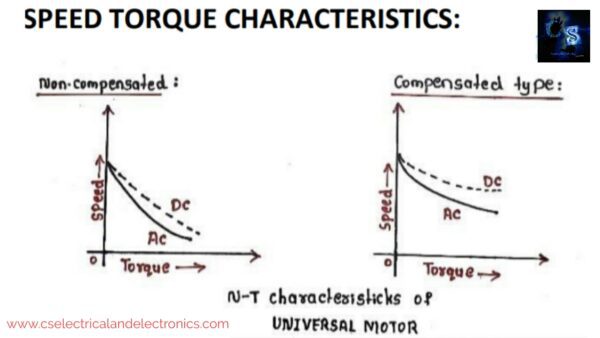
- Compensated type universal motor will be having better speed-torque characteristics.
- The characteristics will remain the same for the DC or AC supply.
- The motors are manufactured for full load operating speed between 3000 to 20000 r.p.m.
Applications Of Universal Motor
- It can be used for domestic applications such as vacuum cleaners, food, mixers, hair drains, electric shavers, etc.
- It can be used in blowers.
- Used in portable tools like drilling machines and small drives.
- Non compensated universal motors can be used whenever there is a requirement for low horsepower.
- Compensated universal motors can be used whenever there is a requirement for high horsepower.
Disadvantages Of Universal Motor
- High noise
- It will be difficult to run a universal motor in the opposite direction.
- Overheating if the motor takes place, to avoid this, we require fresh air.
- It requires frequent service and maintenance.
I hope this article may help you all a lot. Thank you for reading.
Also, read:
- 10 Tips To Maintain Battery For Long Life, Battery Maintainance
- 10 Tips To Save Electricity Bills, Save Money By Saving Electricity
- 100 (AI) Artificial Intelligence Applications In The Automotive Industry
- 100 + Electrical Engineering Projects For Students, Engineers
- 1000+ Control System Quiz, Top MCQ On Control System
- 1000+ Electrical Machines Quiz, Top MCQs On Electrical Machines
- 1000+ MATLAB Simulink Projects For MTech, Engineering Students
- 2024 Is About To End, Let’s Recall Electric Vehicles Launched In 2024

